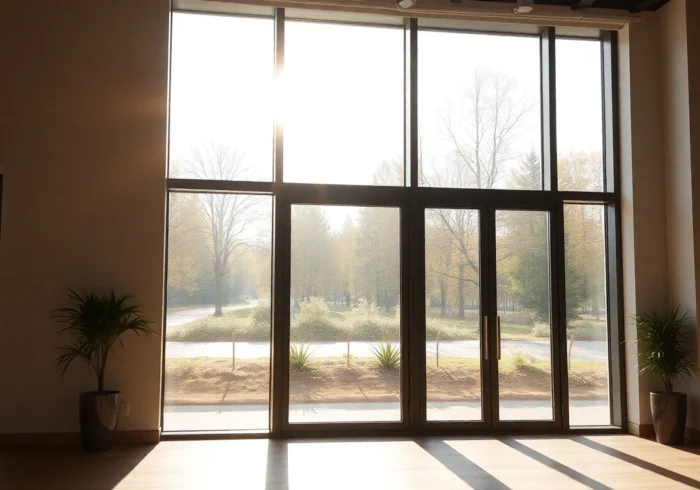Understanding the Role of a Carpenter in Construction
Carpenters are fundamental to the construction industry, shaping the physical environment through their skilled work in building, repairing, and installing frameworks and structures. From residential homes to towering commercial buildings, their craftsmanship ensures structural integrity, safety, and aesthetic appeal. For those seeking a reliable Carpenter or contemplating a career in this versatile trade, understanding the multifaceted nature of carpentry is essential. Carpenters construct, repair, and install building frameworks and structures made predominantly from wood, but often from modern materials like steel and composites, adapting to evolving industry standards.
This comprehensive guide explores the scope of carpentry, the skills and tools involved, the different roles and specializations, and how consumers and aspiring professionals can make informed decisions. With insights based on current industry data, practical examples, and best practices, this article aims to deliver unmatched depth and value for both clients and future carpenters.
What Does a Carpenter Do in Residential Settings?
In residential projects, carpenters are responsible for a broad spectrum of tasks that encompass the entire lifecycle of home construction and renovation. Their work begins with framing—constructing the skeletal framework of walls, floors, and roofs—providing the foundation for all subsequent interior and exterior finishes.
Beyond framing, carpenters excel in installing doors, windows, cabinetry, and flooring, contributing significantly to the aesthetic and functional qualities of a home. They also handle tasks such as building decks, staircases, and custom furniture, customizing each project to meet specific client needs. In renovation projects, carpenters often work hand-in-hand with architects and interior designers to modify existing structures, adding new features or restoring historical elements with precision.
Their role extends into precise measurements, layout marking, and ensuring strict adherence to safety codes. A high level of craftsmanship and attention to detail is essential, especially when aligning elements for aesthetic harmony and structural safety.
Skills and Tools Every Carpenter Uses
Mastering the craft of carpentry requires a combination of technical skills, craftsmanship, and familiarity with a diverse set of tools. Essential skills include accurate measurement, blueprint reading, material estimation, and an understanding of various building codes and safety standards.
Key tools integral to a carpenter’s work include:
- Measuring Instruments: Tape measures, rulers, and calipers for precise dimensions.
- Sawing Tools: Hand saws, circular saws, miter saws, and reciprocating saws for cutting different materials.
- Power Tools: Drills, nail guns, sanders, and routers that increase efficiency and precision.
- Marking and Layout: Chalk lines, squares, and levels to ensure accurate cuts and placements.
- Fastening Equipment: Hammers, screwdrivers, clamps, and adhesives for assembling components.
Proficiency with these tools, combined with spatial visualization and problem-solving skills, enables carpenters to execute complex projects seamlessly. Continuous skill development and staying updated with technological advances, such as CNC machinery or sustainable material handling, remain vital in maintaining competitiveness and quality standards.
How Carpenters Contribute to Commercial Projects
In commercial construction, carpenters undertake large-scale projects that demand meticulous planning and coordination. They construct frameworks for office buildings, shopping centers, factories, and other infrastructure, following detailed blueprints and specifications provided by architects and engineers.
Their contributions include erecting steel frameworks, installing drywall and insulating materials, and finishing interior structures like partitions, ceilings, and flooring. Carpenters specializing in commercial projects often work under tight deadlines and in collaborative teams that include electricians, plumbers, and HVAC specialists. This environment emphasizes precision, adherence to safety regulations, and quality control.
Additionally, commercial carpenters are increasingly involved in sustainable building practices, such as installing energy-efficient components, utilizing eco-friendly materials, and contributing to LEED-certified projects. Their role is critical in delivering durable, efficient, and cost-effective spaces that meet contemporary needs.
Types of Carpenters and Specialty Roles
Rough vs. Finish Carpenters: Key Differences Explained
The carpentry trade encompasses several specialized roles, primarily divided into rough carpentry and finish carpentry. Understanding these distinctions helps clients select the right expert for their project and provides aspiring carpenters with clear career pathways.
Rough carpenters focus on the structural framework of buildings. Their tasks include building the skeleton of a structure—walls, floors, rooftops, and concrete forms. They work with large-scale materials, often using heavy-duty tools and adhering to strict safety standards. Their work is critical before interior or exterior finishes are added.
In contrast, finish carpenters concentrate on aesthetic and detail-oriented work, including installing trim, molding, doors, cabinets, and custom woodworking elements. Their focus is on precision, craftsmanship, and creating visually appealing interiors. Finish carpenters enhance the overall look and feel of the environment, making them highly skilled artisans.
Specializations: Cabinetry, Framing, and Siding
Beyond the broad categories, carpenters often specialize in fields such as cabinetry, framing, siding, and decking. Each specialization requires specific skills and tools:
- Cabinetry: Crafting and installing custom cabinets for kitchens, bathrooms, and storage spaces, requiring meticulous craftsmanship and attention to detail.
- Framing: Building the structural framework of buildings, requiring knowledge of structural engineering and safety standards.
- Siding: Installing exterior panels on buildings, which requires understanding of weatherproofing and material durability.
- Decking and Outdoor Structures: Constructing outdoor decks and pergolas, combining structural integrity with aesthetic appeal.
Industrial and Skilled Trade Carpenters
In industrial settings, carpenters may work on large-scale projects such as factories and power plants, often involving heavy machinery and specialized procedures. Skilled trade carpenters also encompass roles like formwork carpenters, who build molds for concrete structures, and millworkers who craft components from timber or composite materials.
Whether in residential, commercial, or industrial sectors, specialization enables carpenters to refine their skills and command higher wages, especially in high-demand markets or complex projects.
Hiring a Professional Carpenter: What to Expect
Questions to Ask Before Hiring a Carpenter
When engaging a professional, clear communication and vetting are key. Clients should inquire about:
- Experience and portfolios of previous work relevant to the project type.
- Licensing, insurance, and compliance with local building codes.
- Estimated project timelines and payment schedules.
- References or testimonials from past clients.
- Knowledge of sustainable and modern building practices.
Estimating Costs and Project Timelines
Cost estimation varies based on project scope, materials, labor hours, and complexity. An average hourly rate for carpentry services ranges from $75 to $125, but can fluctuate significantly depending on skill level and regional economic factors. Clients should request detailed, written estimates that outline costs for materials, labor, permits, and contingencies.
Project timelines depend on the scope—simple projects may be completed within days, while extensive renovations or custom builds may take several weeks or months. Effective planning, phased scheduling, and clear communication help avoid delays.
Choosing the Right Carpenter for Your Project
Selecting the ideal professional involves evaluating experience, expertise in specific areas, reputation, and alignment with your project needs. Visiting ongoing worksites, reviewing portfolios, and consulting references can provide insights into workmanship quality and reliability. Ensuring the carpenter understands your vision and budget is equally critical for satisfaction and success.
Cost Factors and Pricing for Carpentry Services
Average Hourly Rates and Pricing Models
Carpentry pricing is typically based on hourly rates or fixed project quotes. The average hourly rate ranges from $40 to $200 depending on complexity, specialization, and geographic location. Some professionals offer flat rates for specific services, such as installing cabinets or framing a room.
Factors Influencing Total Project Cost
Several variables impact overall expenses:
- Materials: Quality, type, and availability influence costs—engineered wood, hardwood, or eco-friendly materials may price differently.
- Project Complexity: Intricate designs or custom work add to labor hours and skill requirements.
- Location: Regional wage standards and transportation costs affect pricing.
- Permits and Inspections: Necessary for compliance, possibly adding fees.
- Timeline: Rush projects typically incur premium charges.
How to Budget for Your Construction or Renovation
Creating a realistic budget involves consulting with experienced carpenters, obtaining detailed estimates, and factoring in contingency reserves for unexpected expenses. Prioritize transparency regarding materials and scope. A well-planned budget ensures quality outcomes without unwarranted compromises.
Approach and Best Practices for Quality Carpentry
Design Considerations and Planning
Quality carpentry begins with meticulous planning. Engaging with architects, designers, and clients to understand functional needs and aesthetic preferences results in detailed blueprints. Incorporating modern design principles and adhering to building codes during planning minimizes rework and delays.
Material Selection and Sustainability
Choosing the right materials influences durability, appearance, and environmental impact. Sustainable options, such as reclaimed wood or low-VOC finishes, are increasingly popular. A knowledgeable carpenter will advise on the best fit for your climate, budget, and eco-conscious values, promoting long-term value and sustainability.
Ensuring Safety and Compliance Standards
Compliance with safety standards and building regulations is non-negotiable. This includes proper use of safety equipment, adherence to OSHA standards, and obtaining necessary permits. Skilled carpenters maintain safe workplaces, reduce liability, and ensure project longevity.
Incorporating quality assurance processes, such as inspections throughout construction phases, further guarantees that standards are met. Consulting industry best practices and ongoing training keeps skills sharp and the work compliant with evolving regulations.



